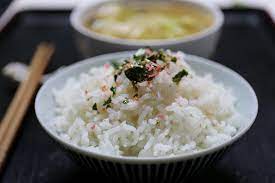Rice to the Top
October 3, 2022
The largest source of calories for most of the world’s population, Rice has shown its versatility and importance over the centuries. As both a key player against famines in Asia and as a staple in most households globally, rice has evolved to be one of the most diverse items in world gastronomy.
Originally domesticated in China and India around 6,500 years ago, rice has played an integral role in the histories of these Asian countries. Weeding, transplanting, and irrigating the crop transformed ancient China into an agrarian society, prompting the invention of more sophisticated irrigation techniques along with the advent of iconic dishes such as rice dumplings and glutinous rice, known as zongi. This delectable carbohydrate has also secured itself a prominent place in Chinese mythology, viewed as a gift from animals following large floods, providing a reliable source of nourishment for the Chinese people.
During India’s independence era, the British used rice as a means to perpetuate oppression. During the Bengal famine of 1943 drought, malnutrition, oppressive colonial policies, and starvation flourished. The people of Bengal looked towards granaries for respite. The British empire, however, chose to intentionally withhold stores of rice, instead using the grain to feed British troops fighting in the Second World War. Such desperate circumstances led to the birth of Indian dishes such as muri, or puffed rice, with aloor torkari, potato curry. Currently, India has taken its place as the largest supplier of rice globally, distributing approximately 40% of global rice shipments.
As a global economy interconnects countries, cultures, and cuisines, rice is becoming more diverse, entering the plates of consumers worldwide in the form of viral salmon-rice bowl tik tok trends, “healthy” rice cake snacks, horchata, kombucha, and a multitude of other dishes. Going against the grain, this tasty staple has witnessed a rice to the top.






